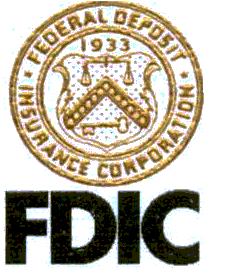The Wall Street Journal
More Than One-Tenth of Total Are on 'Problem List' as Smaller Lenders Take Time to Recover
 More than a 10th of U.S. banks remain at risk of failure even as some industry indicators, including credit quality, show some nascent signs of revival.
More than a 10th of U.S. banks remain at risk of failure even as some industry indicators, including credit quality, show some nascent signs of revival.The Federal Deposit Insurance Corp. said Tuesday that 829 of the nation's roughly 7,800 banks were on its "problem list" at the end of June, up from 775 at the end of the first three months of the year. Already 118 banks have failed this year, well ahead of the pace set last year when 140 were seized by regulators.
Lending by U.S. banks also continues to be stunted; loan balances across all major loan categories fell during the second quarter, and total loan and lease balances fell 1.3%. Total assets for the industry fell 1% to $13.2 trillion during the quarter.
FDIC Chairman Sheila Bair said banks are starting to ease their lending standards for some types of loans but warned that "lending will not pick up until businesses and consumers gain the confidence they need to hire and spend."
She suggested regulators are closely watching for any indications of how the economy is affecting banks, but played down the potential effects of another downturn.
"I think if we did have a double-dip [recession], and we are not predicting that would happen, it would have a less profound impact," she said.
The results highlighted the diverging fortunes of larger banks and their smaller rivals. Major firms, which benefited from outsize government support at the height of the financial crisis, have been able to recover faster as evidenced by their ability to set aside less money for future loan losses. Smaller banks, conversely, increasingly make up a greater portion of the banks on the FDIC's list of troubled banks and continued to set aside more money for future loan problems.
The number of banks in the U.S. continued to fall; the FDIC said there were 104 fewer banks in the second quarter compared with the first quarter. And for the first time in the 38 years that data have been collected, the FDIC didn't add any new banks.
"The smaller banks are recovering, but it is at a slower rate," Ms. Bair said. "It hit the large banks first and then the community banks, so they will be lagging the larger banks in terms of coming out of this."
Banks' second-quarter profits totaled $21.6 billion, reversing a combined loss of $4.4 billion in the second quarter of 2009. The latest results were the highest quarterly earnings since before the financial crisis. The FDIC said nearly two-thirds of U.S. banks reported a year-over-year improvement in their quarterly results, though 20% of firms still reported a net loss.
For the first time since 2006 the number of loans at least three months past due fell, declining nearly 5%, and the number of loans charged off by banks declined across most major loan categories.
Banks boosted their results by setting aside less to cover future loan losses than they have in recent quarters. The agency said firms set aside a total of $40.3 billion to gird against future credit-quality problems. That still is high by historic standards, but the figure is the lowest total reported by the industry in two years.
"Lower loss provisions suggest that many banks see asset quality problems moderating," Ms. Bair said.
Still, more than 60% of banks, mainly smaller institutions, continued to boost their loss reserves.






